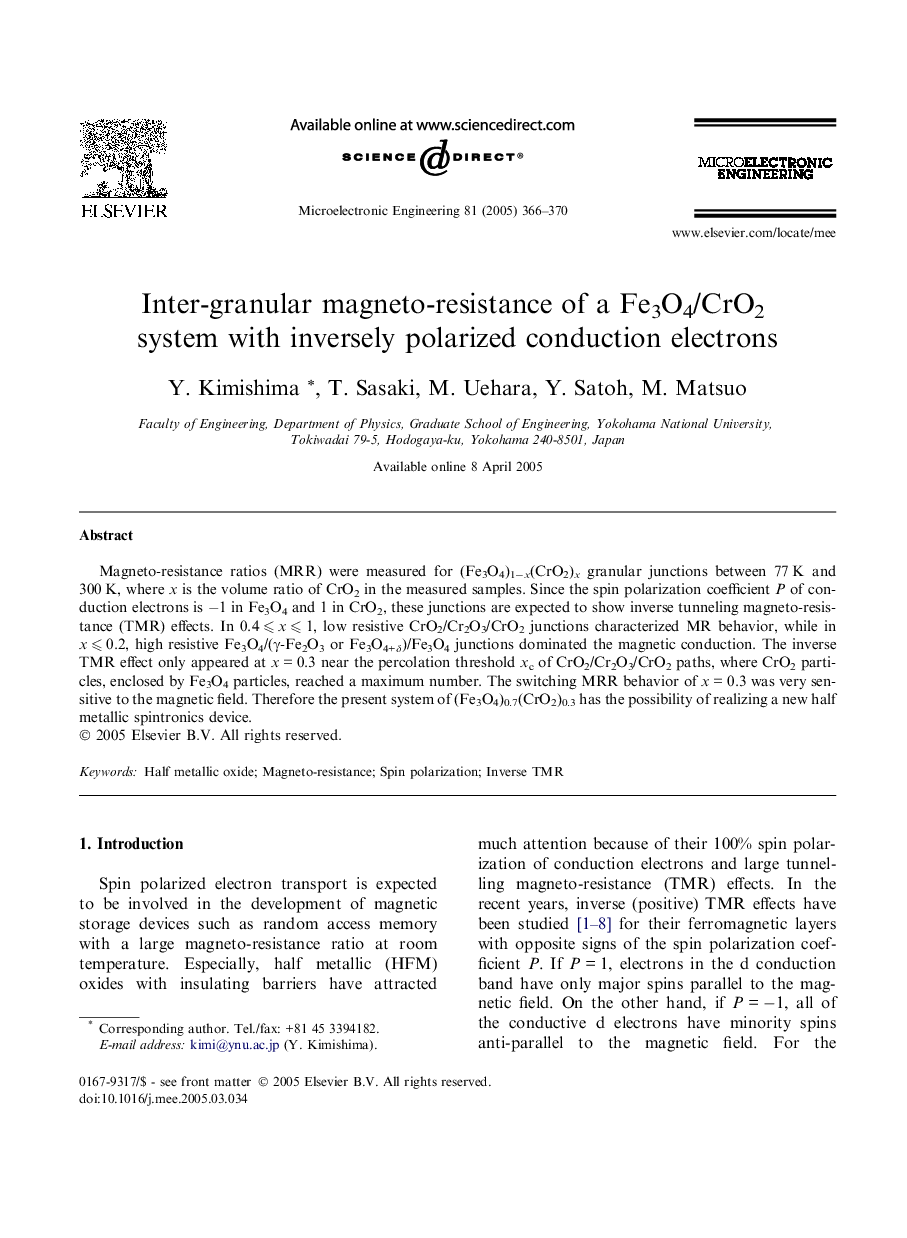| Article ID | Journal | Published Year | Pages | File Type |
|---|---|---|---|---|
| 9670413 | Microelectronic Engineering | 2005 | 5 Pages |
Abstract
Magneto-resistance ratios (MRR) were measured for (Fe3O4)1âx(CrO2)x granular junctions between 77 K and 300 K, where x is the volume ratio of CrO2 in the measured samples. Since the spin polarization coefficient P of conduction electrons is â1 in Fe3O4 and 1 in CrO2, these junctions are expected to show inverse tunneling magneto-resistance (TMR) effects. In 0.4 ⩽ x ⩽ 1, low resistive CrO2/Cr2O3/CrO2 junctions characterized MR behavior, while in x ⩽ 0.2, high resistive Fe3O4/(γ-Fe2O3 or Fe3O4+δ)/Fe3O4 junctions dominated the magnetic conduction. The inverse TMR effect only appeared at x = 0.3 near the percolation threshold xc of CrO2/Cr2O3/CrO2 paths, where CrO2 particles, enclosed by Fe3O4 particles, reached a maximum number. The switching MRR behavior of x = 0.3 was very sensitive to the magnetic field. Therefore the present system of (Fe3O4)0.7(CrO2)0.3 has the possibility of realizing a new half metallic spintronics device.
Keywords
Related Topics
Physical Sciences and Engineering
Computer Science
Hardware and Architecture
Authors
Y. Kimishima, T. Sasaki, M. Uehara, Y. Satoh, M. Matsuo,
